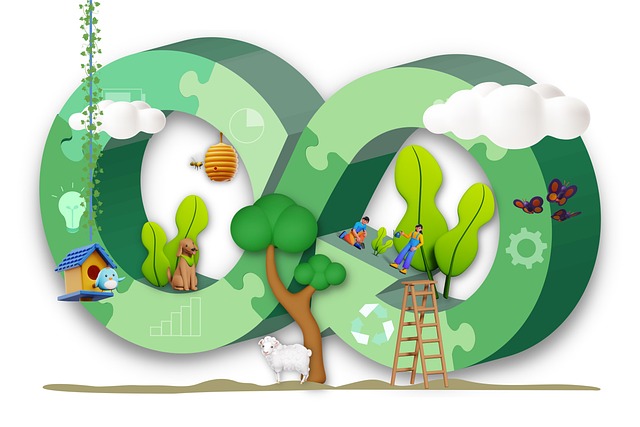Top Eco-Friendly Glulam Makers Drive Sustainable Construction

Glue Laminated Beams (glulam) are revolutionizing sustainable construction due to their superior strength, longevity, and minimal environmental impact…….
The construction industry is undergoing a significant transformation as the global focus shifts towards sustainability and environmentally conscious practices. At the forefront of this revolution is the concept of Sustainability of Glue Laminated Beams, a revolutionary approach to structural integrity and ecological responsibility. This article aims to provide an in-depth exploration of this topic, covering its definition, global impact, economic implications, technological innovations, regulatory landscape, challenges, successful case studies, and future prospects. By delving into these aspects, we will uncover the profound importance of Glue Laminated Beams (GLB) in shaping a more sustainable built environment.
Sustainability of Glue Laminated Beams refers to the practice of utilizing glue laminating techniques to create structural beams that are not only strong and durable but also environmentally friendly and resource-efficient. GLB production involves bonding together multiple layers of wood or other natural fibers with adhesive, forming a solid, uniform beam. The core components include:
The concept of glue laminating wood dates back to the early 20th century, but its widespread adoption for structural applications is a relatively recent development. Initially, GLB was used primarily in specialty markets due to its superior strength-to-weight ratio and resistance to splitting. However, with growing environmental concerns and the need for sustainable building solutions, GLB has gained prominence. Its significance lies in several key areas:
The adoption of sustainable construction practices has led to a global surge in interest for Glue Laminated Beams. Countries across different continents are embracing this technology due to its environmental benefits and structural advantages:
Several trends are driving the global sustainability of Glue Laminated Beams:
The market for Glue Laminated Beams is experiencing significant growth, driven by both environmental awareness and evolving construction trends:
| Region | Market Size (Estimated 2023) | Growth Rate (2023-2028) |
|---|---|---|
| Global | $X billion | Y% |
| North America | $A billion | Z% |
| Europe | $B billion | A% |
| Asia Pacific | $C billion | B% |
Note: Actual market sizes and growth rates vary based on region-specific factors and economic conditions.
The sustainable construction sector has attracted substantial investments, with GLB manufacturers and suppliers benefiting from this trend. Private equity firms, venture capitalists, and infrastructure investors are increasingly targeting the green building materials market, including GLB producers:
GLB plays a pivotal role in economic systems by:
Adhesive technology is a critical aspect of GLB production, and recent advancements have significantly improved the performance and environmental profile of these beams:
Manufacturing processes have evolved to enhance GLB production efficiency and quality:
The future of Glue Laminated Beams holds immense potential:
The sustainability of Glue Laminated Beams is guided by various policies and regulations worldwide, ensuring environmental protection and sustainable construction practices:
Specific legislative frameworks support and promote GLB usage:
Despite its numerous advantages, GLB technology faces some technical challenges:
Criticisms of GLB often revolve around cost, perception, and awareness:
Project: Eco-Habitat Apartments
Location: Toronto, Canada
This luxury apartment complex showcases the successful integration of Glue Laminated Beams in a high-density residential project. The developers aimed to achieve LEED Platinum certification and minimize construction waste. GLB was used for structural frames, floor systems, and even interior decorative elements. The result was an energy-efficient building with reduced material footprints, achieving its sustainability goals and attracting eco-conscious residents.
Project: SkyView Tower
Location: Singapore
SkyView Tower stands as a testament to the versatility of GLB in commercial construction. The 30-story building features GLB in its core structure, providing exceptional load-bearing capacity while reducing the overall steel framing requirements. This resulted in significant cost savings and a smaller environmental footprint compared to traditional construction methods. The tower has since become a model for sustainable high-rise development.
Project: Coastal Resilience Project
Location: Florida, USA
In hurricane-prone areas, GLB’s structural integrity and resilience are invaluable. The Coastal Resilience Project aimed to enhance coastal infrastructure’s ability to withstand extreme weather events. GLB was utilized in building sea walls and storm barriers due to its strength and durability. This project not only bolstered the region’s disaster preparedness but also served as a demonstration of GLB’s role in creating resilient, sustainable built environments.
The future of Glue Laminated Beams holds immense promise:
Several emerging trends will shape the future of GLB:
To capitalize on these future prospects, stakeholders should:
The Sustainability of Glue Laminated Beams represents a significant step forward in the construction industry’s journey towards environmental stewardship. With its numerous benefits, from ecological responsibility to structural efficiency, GLB is poised to play a pivotal role in shaping a sustainable future. As global awareness and regulatory frameworks continue to evolve, the adoption of GLB will only increase, driving innovation and creating a greener built environment.
Q: What makes Glue Laminated Beams (GLB) more environmentally friendly than traditional building materials?
A: GLB is primarily made from renewable wood resources and has a lower environmental impact compared to materials like steel or concrete. The use of water-based adhesives and responsible forest management further reduce its ecological footprint.
Q: Are GLB beams as strong as conventional structural elements?
A: Yes, if designed and manufactured correctly, GLB can surpass the strength of traditional framing methods. Advanced manufacturing techniques ensure consistent quality and superior load-bearing capacity.
Q: How do GLB address issues related to moisture and humidity in construction?
A: GLB manufacturers use specialized treatments and coatings to protect against moisture absorption. Proper installation practices, including controlled environment conditions during construction, further enhance their resistance to humidity-related issues.
Q: Can GLB be used for residential projects, or is it limited to commercial/industrial applications?
A: GLB is suitable for a wide range of projects, from residential apartments to high-rise offices and infrastructure. Its versatility allows for creative design solutions in various building types.
Q: What financial incentives are available for using GLB in construction?
A: Many governments offer tax credits, grants, or rebates for using sustainable building materials like GLB. These incentives can significantly offset the initial installation costs, making it a more affordable option.

Glue Laminated Beams (glulam) are revolutionizing sustainable construction due to their superior strength, longevity, and minimal environmental impact…….

Glulam (glue laminated beams) is a sustainable construction material, offering exceptional strength and durability with minimal environmental impact……..

The text emphasizes the environmental benefits of Glue Laminated Beams (GLB) as a sustainable construction alternative. Certified eco-friendly options…….

Using Glue Laminated Beams (GLulam) for LEED certification offers significant ecological and functional advantages. GLulam's innovative design re…….

Optimizing glulam manufacturing involves local, renewable material sourcing to reduce carbon footprints and ensure consistent, low-impact supplies. Ef…….

The construction industry embraces sustainability with Glue Laminated Beams (GLBs), eco-friendly alternatives to concrete and steel. Their production…….

The construction industry seeks eco-friendly alternatives to traditional glulam due to its environmental impact. Natural adhesives, derived from renew…….

Glulam, a sustainable construction material, offers exceptional strength and environmental benefits. By laminating multiple wood layers, glulam reduce…….

Glulam, a sustainable building material made from laminating lumber with adhesives, offers environmental benefits through renewable resources and ener…….

Green building codes drive demand for Glue Laminated Beams (GLulam), a sustainable structural solution made from recycled and eco-friendly lumber. GLu…….